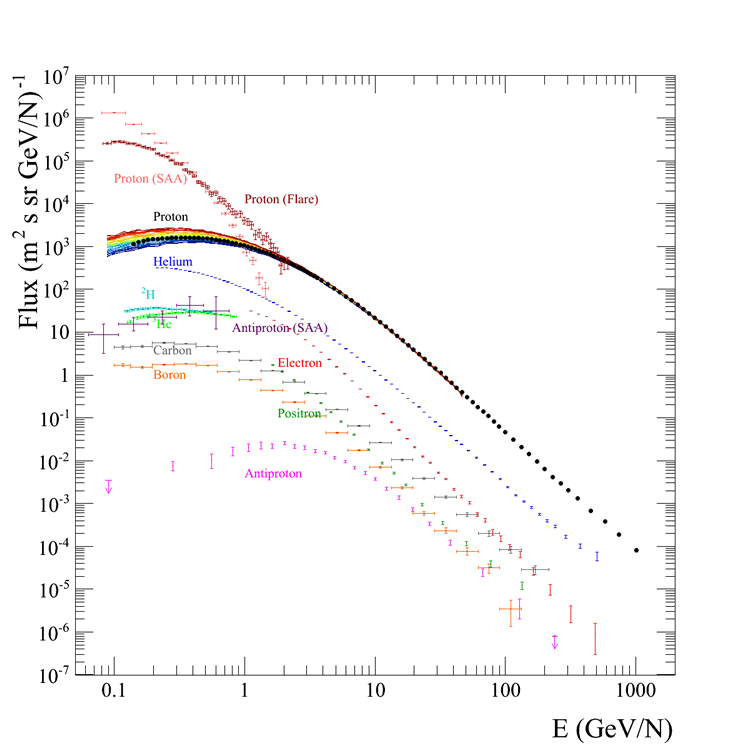
On the 15th of June 2006, the PAMELA (Payload for Antimatter Matter Exploration and Light-nuclei Astrophysics) satellite-borne experiment was launched onboard the Russian Resurs-DK1 satellite by a Soyuz rocket from the Baikonur Space Centre. The satellite was placed in a quasi-polar 70° inclination orbit at an altitude varying between 350 km and 600 km. In September 2010 the altitude was moved to 580 km.
PAMELA is a powerful particle identifier using a permanent magnet spectrometer with a variety of specialized detectors for cosmic ray direct measurements in space with unprecedented precision. New very important data on antiparticle component of the cosmic radiation, electron energy spectrum and nuclear and isotopic composition of cosmic rays have been obtained in a large energy range, as well on cosmic ray solar modulation, solar flares and radiation belts around the Earth.
Very unexpected and exciting is the excess found in the positron energy spectrum and positron fraction, measured from 400 MeV up to 200 GeV, interpreted in more than one thousand scientific papers either in terms of dark matter annihilation or pulsar contributions or, instead, as evidence that the propagation models should be revised.
Significant constraints on dark matter models have been provided from the measurement of the antiproton spectrum in the energy range from 60 MeV to 350 GeV, consistent with secondary production. New light in the understanding of cosmic ray propagation mechanisms has been given from the energy spectra of protons and helium nuclei measured up to 1.2 TV, challenging the current paradigm of cosmic ray acceleration by a single supernova remnant.
The discover of a belt of trapped antiprotons around the Earth aroused great interest even outside the scientific community. For the first time the effects of the solar activity on the cosmic ray propagation have been measured for ten years, covering large part of the 23rd descending and 24th ascending periods of the solar cycles.
